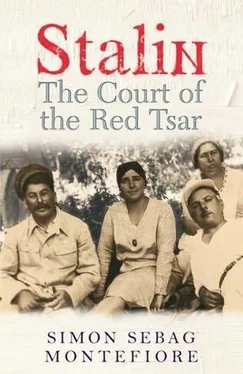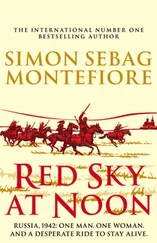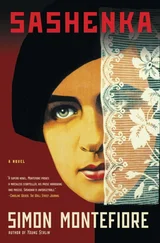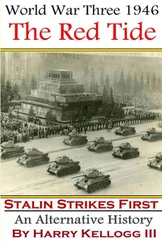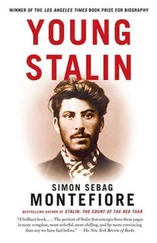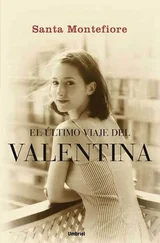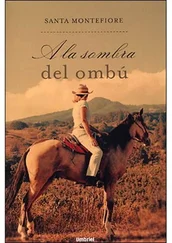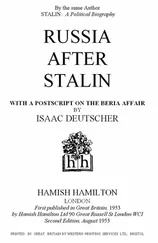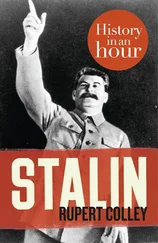Stalin was born with the second and third toes of his left foot joined. He suffered a pock-marked face from an attack of smallpox and later damaged his left arm, possibly in a carriage accident. He grew up into a sallow, stocky, surly youth with speckled honey-coloured eyes and thick black hair—a kinto , Georgian street urchin. He was exceptionally intelligent with an ambitious mother who wanted him to be a priest, perhaps like his real father. Stalin later boasted that he learned to read at five by listening to Father Charkviani teaching the alphabet. The five-year-old then helped Charkviani’s thirteen-year-old daughter with her reading.
In 1888, he entered the Gori Church School and then, triumphantly, in 1894, won a “five rouble scholarship” to the Tiflis Seminary in the Georgian capital. As Stalin later told a confidant, “My father found out that along with the scholarship, I also earned money (five roubles a month) as a choirboy… and once I went out and saw him standing there: “ ‘Young man, sir,’ said Beso, ‘you’ve forgotten your father… Give me at least three roubles, don’t be as mean as your mother!’
“‘Don’t shout!’ replied Soso. ‘If you don’t leave immediately, I’ll call the watchman!’” Beso slunk away. [8] I am grateful to Gela Charkviani for sharing with me the unpublished but fascinating manuscript of the memoirs of his father, Candide Charkviani, First Secretary of the Georgian Party, 1938–1951. In old age, Stalin spent hours telling Charkviani about his childhood. Charkviani writes that he tried to find Beso’s grave in the Tiflis cemetery but could not. He found photographs meant to show Beso and asked Stalin to identify him, but Stalin stated that these did not show his father. It is therefore unlikely that the usual photograph said to show Beso is correct. On Stalin’s paternity, the Egnatashvili family emphatically deny that the innkeeper was Stalin’s father.
He apparently died of cirrhosis of the liver in 1909.
Stalin sometimes sent money to help his mother but henceforth kept his distance from Keke whose dry wit and rough discipline resembled his own. There has been too much cod-psychology about Stalin’s childhood but this much is certain: raised in a poor priest-ridden household, he was damaged by violence, insecurity and suspicion but inspired by the local traditions of religious dogmatism, blood-feuding and romantic brigandry. “Stalin did not like to speak about his parents and childhood” but it is meaningless to over-analyse his psychology. He was emotionally stunted and lacked empathy yet his antennae were supersensitive. He was abnormal but Stalin himself understood that politicians are rarely normal: History, he wrote later, is full of “abnormal people.”
* * *
The seminary provided his only formal education. This boarding school’s catechismic teaching and “Jesuitical methods” of “surveillance, spying, invasion of the inner life, the violation of people’s feelings” repelled, but impressed, Soso so acutely that he spent the rest of his life refining their style and methods. It stimulated this autodidact’s passion for reading but he became an atheist in the first year. “I got some friends,” he said, “and a bitter debate started between the believers and us!” He soon embraced Marxism.
In 1899, he was expelled from the seminary, joined the Russian Social Democratic Workers’ Party and became a professional revolutionary, adopting the nom de revolution Koba, inspired by the hero of a novel, The Parricide , by Alexander Kazbegi, a dashing, vindictive Caucasian outlaw. He combined the “science” of Marxism with his soaring imagination: he wrote romantic poetry, published in Georgian, before working as a weatherman at the Tiflis Meteorological Institute, the only job he held before becoming one of the rulers of Russia in 1917.
“Koba” was convinced by the universal panacea of Marxism, “a philosophical system” that suited the obsessive totality of his character. The class struggle also matched his own melodramatic pugnacity. The paranoid secrecy of the intolerant and idiosyncratic Bolshevik culture dovetailed with Koba’s own self-contained confidence and talent for intrigue. Koba plunged into the underworld of revolutionary politics that was a seething, stimulating mixture of conspiratorial intrigue, ideological nitpicking, scholarly education, factional games, love affairs with other revolutionaries, police infiltration and organizational chaos. These revolutionaries hailed from every background—Russians, Armenians, Georgians and Jews, workers, noblemen, intellectuals and daredevils—and organized strikes, printing presses, meetings and heists. United in the obsessional study of Marxist literature, there was always a division between the educated bourgeois émigrés, like Lenin himself, and the rough men of action in Russia itself. The underground life, always itinerant and dangerous, was the formative experience not only of Stalin but of all his comrades. This explains much that happens later. 1
In 1902, Koba won the spurs of his first arrest and Siberian exile, the first of seven such exiles from which he escaped six times. These exiles were far from Stalin’s brutal concentration camps: the Tsars were inept policemen. They were almost reading holidays in distant Siberian villages with one part-time gendarme on duty, during which revolutionaries got to know (and hate) each other, corresponded with their comrades in Petersburg or Vienna, discussed abstruse questions of dialectical materialism, and had affairs with local girls. When the call of freedom or revolution became urgent, they escaped, yomping across the taiga to the nearest train. In exile, Koba’s teeth, a lifelong source of pain, began to deteriorate.
Koba avidly supported Vladimir Lenin and his seminal work, What Is to Be Done? This domineering political genius combined the Machiavellian practicality of seizing power with mastery of Marxist ideology. Exploiting the schism that would lead to the creation of his own Bolshevik Party, Lenin’s message was that a supreme Party of professional revolutionaries could seize power for the workers and then rule in their name in a “dictatorship of the proletariat” until this was no longer necessary because socialism had been achieved. Lenin’s vision of the Party as “the advance detachment” of the “army of proletarians… a fighting group of leaders” set the militarist tone of Bolshevism. 2
In 1904, on Koba’s return to Tiflis, he met his future father-in-law Sergei Alliluyev, twelve years his senior, a skilled Russian electrical artisan married to Olga Fedorenko, a strong-willed Georgian-German-Gypsy beauty with a taste for love affairs with revolutionaries, Poles, Hungarians, even Turks. It was whispered that Olga had an affair with the young Stalin, who fathered his future wife, Nadya. This is false since Nadezhda was already three when her parents first met Koba, but his affair with Olga is entirely credible and he himself may have hinted at it. Olga, who, according to her granddaughter Svetlana, had a “weakness for southern men,” saying “Russian men are boors,” always had a “soft spot” for Stalin. Her marriage was difficult. Family legend has Nadya’s elder brother Pavel seeing his mother making up to Koba. Such short liaisons were everyday occurrences among revolutionaries.
Long before they fell in love, Stalin and Nadya were part of the Bolshevik family who passed through the Alliluyev household: Kalinin and Yenukidze among others at that dinner in 1932. There was another special link: soon afterwards, Koba met the Alliluyevs in Baku, and saved Nadya from drowning in the Caspian Sea, a romantic bond if ever there was one. 3
* * *
Koba meanwhile married another sprig of a Bolshevik family. Ekaterina, “Kato,” a placid, darkly pretty Georgian daughter of a cultured family, was the sister of Alexander Svanidze, also a Bolshevik graduate of the Tiflis seminary who joined Stalin’s Kremlin entourage. Living in a hut near the Baku oilfields, Kato gave him a son, Yakov. But Koba’s appearances at home were sporadic and unpredictable.
Читать дальше
